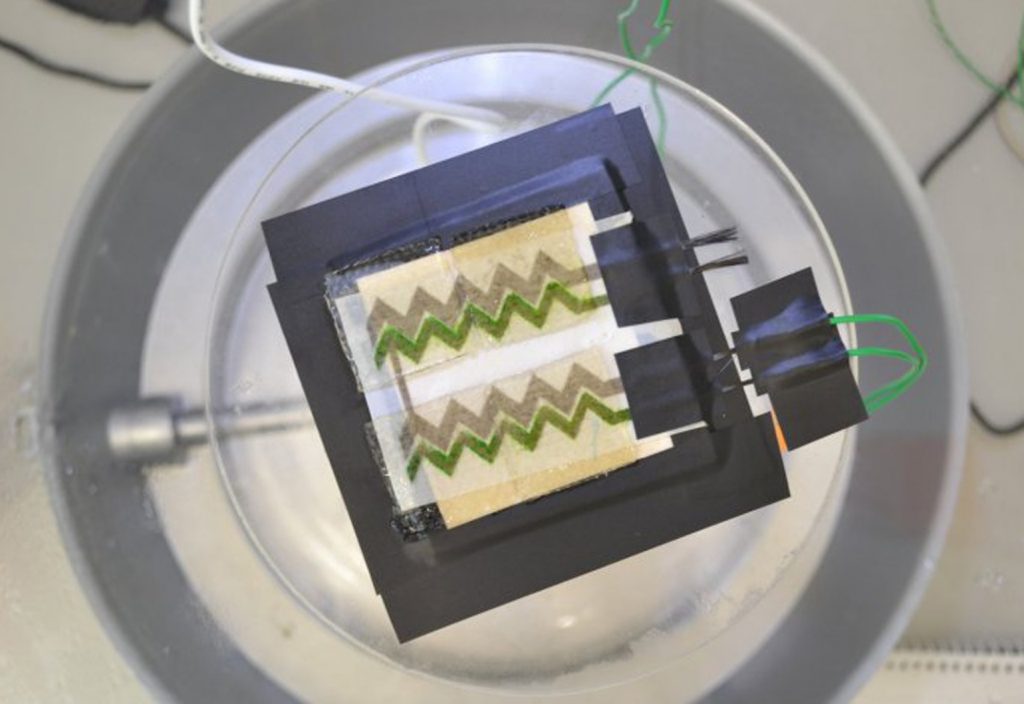A new development by UK researchers could provide wall-to-wall green energy for future homes.
The team of engineers, scientists and designers from Imperial College London, University of Cambridge and Central Saint Martins have printed cyanobacteria and circuits onto wallpaper to give it the dual properties of a solar cell and bio-battery.
Study co-author Dr Marin Sawa from Imperial College’s Department of Chemical Engineering said in a news release that the technology could have a range of applications including monitoring conditions within the home environment.
“Imagine a paper-based, disposable environmental sensor disguised as wallpaper, which could monitor air quality in the home. When it has done its job it could be removed and left to biodegrade in the garden without any impact on the environment,” she said.
Using an inkjet printer, the researchers applied an ink containing live cyanobacteria onto paper that had been pre-printed with carbon nanotubes.
This kind of renewable energy technology is known as microbial biophotovoltaics (BPV). It’s an emerging field of global research that makes use of cyanobacteria and algae’s photosynthesis processes to produce electricity from sunlight.
BPV cells can continue to generate energy at night, as the cyanobacteria store solar energy in molecules that can be harvested after dark.
The technology has so far been uneconomical for commercial applications, but the inkjet printing process is an important step towards economic viability for BPV.
According to Dr Andrea Fantuzzi from the Department of Life Sciences at Imperial College, we probably won’t see large-scale paper-based BPV power plants replacing conventional solar technology. Instead, they could be used in disposable, biodegradable, low power applications.
“Their low power output means they are more suited to devices and applications that require a small and finite amount of energy, such as environmental sensing and biosensors,” he said.
For example, in addition to use as a source of green energy in the form of wallpaper, Fantuzzi said that a possible application was low-cost, disposable sensors for things like measuring blood glucose in diabetes patients.
The team will now work to increase the size of their prototype from palm- to A4- size to increase the electrical output.
“This is an exciting proof-of-concept. The challenge now is to make panels that are more powerful, long-lasting and robust,” said Professor Christopher Howe from the Department of Biochemistry, University of Cambridge.
